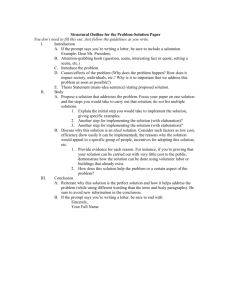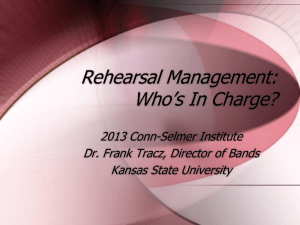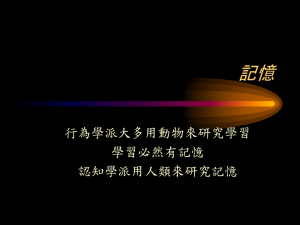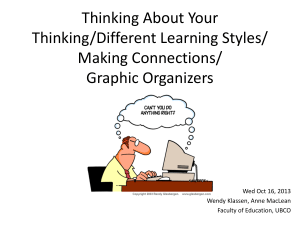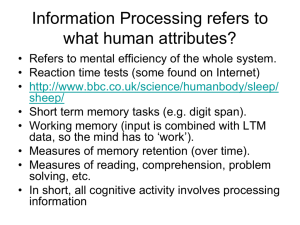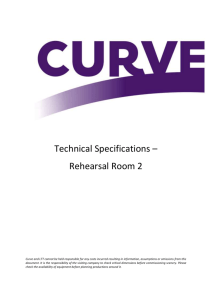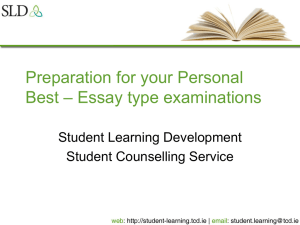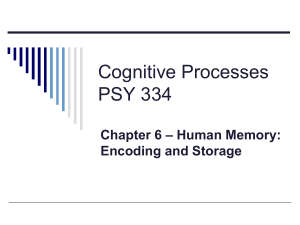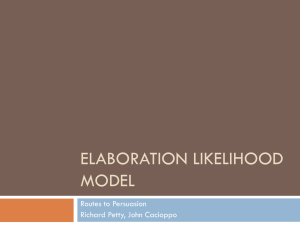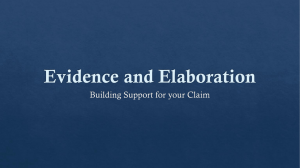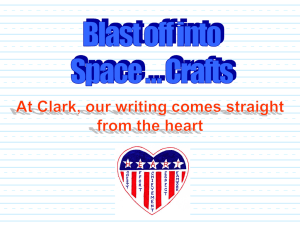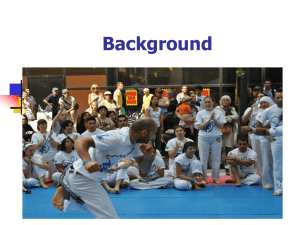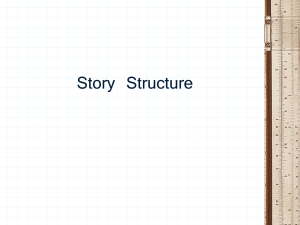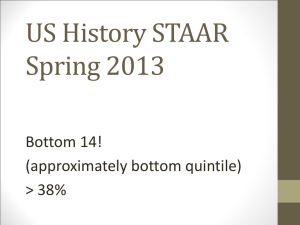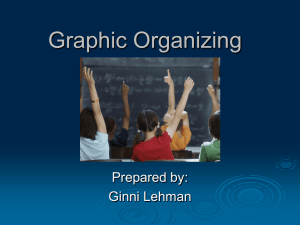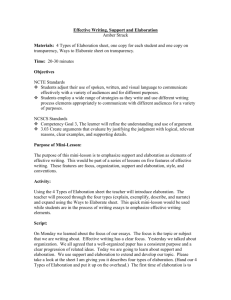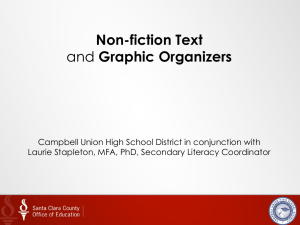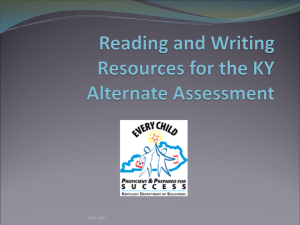Day 18 Support Rehearsal & Elaboration
advertisement
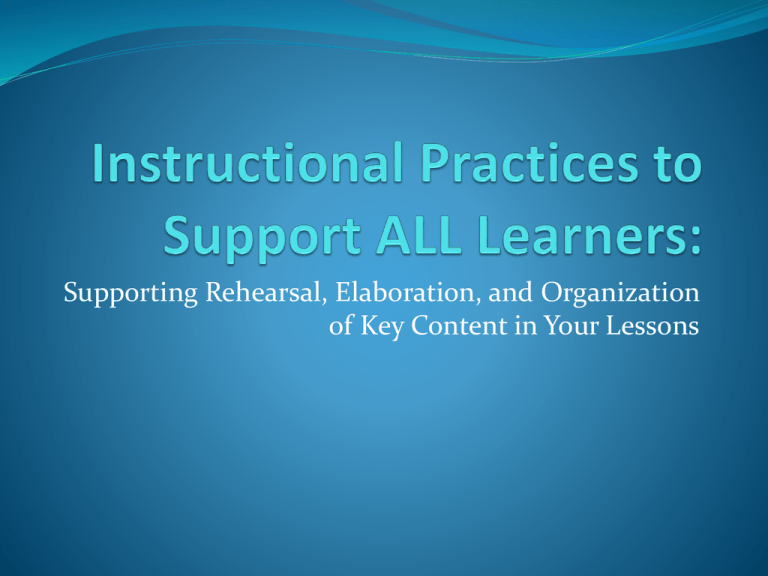
Supporting Rehearsal, Elaboration, and Organization of Key Content in Your Lessons Objectives: You will be able to: Describe instructional techniques for supporting rehearsal, elaboration, and organization of key content Cornell Notes: Rehearse and Elaborate Graphic Representations: Organize and see relationships Use signal words and expository text structures to inform note-taking organizers (you or your students create) Seminar: Share example(s) of how these techniques might be useful in your discipline Instructional Practices to Support Learners M&MDAAVISS 1. 2. 3. Rehearsal: Determining important ideas (vs. Driveby Reading) and summarizing Judgment and Decision Making Text-marking & note-taking Elaboration: Making connections; generating questions; visualizing; interpreting; transforming Clarify understanding and personal your message Retell > paraphrase > summarize > synthesize Quick writes, text coding, double entry journals Organization: Noting relationships between ideas Pyramid notes, text frames, graphic representations Supporting Rehearsal and Elaboration of Key Content Cornell Notes 1. Document with Notes 2. Jot down Key Points 3. Summarize 4. Study Supporting Organization of Key Content with Graphic Organizers Problem-Solution for Science Report (science news: problem solution; your thoughts; key words) Problem-Solution for History Text (who; problems; what changes affected these people; what did they do to solve their problem) Quick Sketch of Chemical Reactions (draw a picture of each step of the process as a cycle or cause/effect) Organizing Ideas in Math Using Graphic Organizers to Represent Relationship Between Key Ideas Five common informational text structures? Corresponding “signal words”? Enumeration Time Sequence Compare/ Contrast Cause/ Effect Problem/ Solution Signal Words (Mortar) How can we teach students to recognize these signal words and use them to organize their notes in ways that connect key ideas? Signal Words (the mortar that links the bricks together) How can you teach students to recognize these signal words and use them to organize their notes in ways that connect key ideas? Can You Identify (And Help Your Students Identify) Examples of Common Expository Text Structures? See your handout Enumeration Time Order Comparison-Contrast Cause-Effect Problem Solution Time Order JFK Signal words: • Specific dates • After • It wasn’t until Freedom of Religion Enumeration Signal words: • several points • one point • finally Castles Compare & Contrast Signal words: • for X, not Y • in spite of • except for • Not only Fire Cause-Effect Signal words: • was started by • left by • before it was… • as a result • were all that remained Problem-Solution Price of Oil Signal words: • created a serious problem • responded to.. by • this resulted in • they began… and discovered… Seminar: Applying Instructional Techniques to Your Content Share a technique that can help support students’ rehearsal, elaboration, and organization of content you plan to cover in your lesson plan assignment. Identify a feature of this technique that would be especially useful for supporting struggling readers and/or English language learners. Homework CHANGE IN SEQUENCE ON SYLLABUS! Next: Using Assessments To Guide Learning Read: Tovani, Ch. 8 All These Sticky Notes #16 Guskey: The rest of the story.
